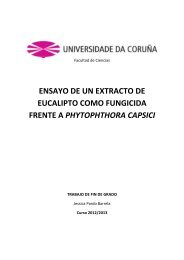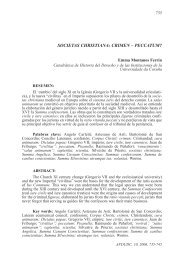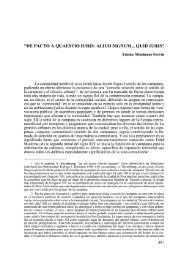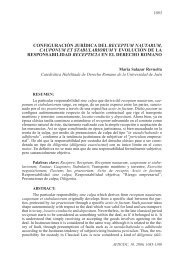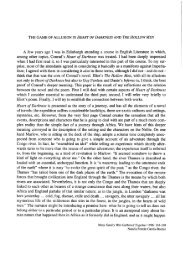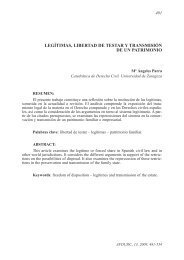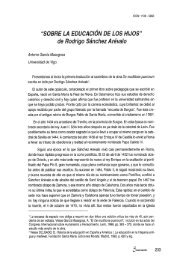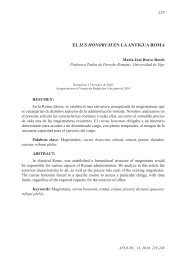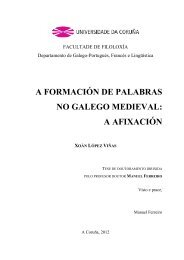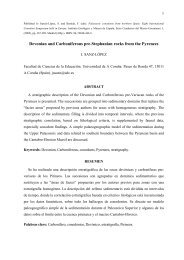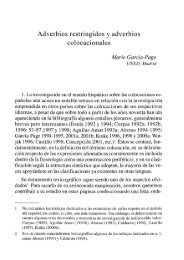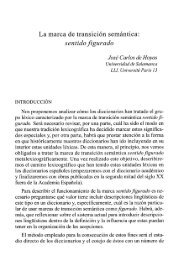lie^x - RUC
lie^x - RUC
lie^x - RUC
You also want an ePaper? Increase the reach of your titles
YUMPU automatically turns print PDFs into web optimized ePapers that Google loves.
BIBLIOGRAFÍA<br />
Schŭller, H.-J. & Entian, K.-D. (1987). Isolation and expression analysis of two yeast<br />
regulatory genes involved in the derepression of glucose-repressible enrymes. Mol. Gen.<br />
Genet., 209: 366-373.<br />
Schŭller, C., Brewster, J.L., Alexander, M.R., Gustin, M.C. & Ruis, H. (1994). The HOG<br />
pathway controls osmotic regulation of transcription via the stress response element<br />
(STRE) of the Saccharomyces cerevisiae CTTI gene. EMBO J., 13: 4382-4389.<br />
Sharp, P.M. & Li, W.-H. (1987). The codon Adaptation Index. A measure of directional<br />
synonymous codon usage bias, and its potential applications. Nucleic Acids Res. 15: 1281-<br />
1295.<br />
Shena, M., Shalon, D., Davis, R.W. & Brown, P.O. (1995). Quantitative monitoring of<br />
gene expression patterns with a complimentary DNA microarray. Science, 270: 467-470.<br />
Silar, P., Butler, G. & Thiele, D.J. (1991). Heat shock transcription factor activates<br />
transcription of the yeast metallothionein gene. Mol. Cell. Biol., 11: 1232-1238.<br />
Smart, W.C., Coffman, J.A. & Cooper, T.G. (1996). Combinatorial regulation of the<br />
Saccharomyces cerevisiae CARI (arginase) promoter in response to multiple<br />
environmental signals. Mol. Cell. Biol., 16: 5876-5887.<br />
Sogin, S.J. & Saunders, C.A. (1980). Fluctuation in polyadenylate size and content in<br />
exponential- and stationary-phase cells of Saccharomyces cerevisiae. J. Bacteriol., 144: 74-<br />
81.<br />
Sorger, P.K. (1991). Heat shock factor and the heat shock response. Cell, 65: 363-366.<br />
Sprague, G.F. & Cronan Jr., J.E. (1977). Isolation and characterization of Saccharomyces<br />
cerevisiae mutants defective in glycerol catabolism. J. Bacteriol., 129: 1335-1342.<br />
Stanbrough, M. & Magasanik, B. (1996). Two transcription factors, Gln3p and Nillp, use<br />
the same GATAAG sites to activate the expression of GAPl of Saccharomyces cerevisiae.<br />
J. Bacteriol., 178: 2465-2468.<br />
Stanbrough, M., Rowen, D.W. & Magasanik, B. (1996). Role of the GATA factors Gln3p<br />
and Nit2p of Saccharomyces cerevisiae in the expresion of the nitrogen-regulated genes.<br />
Proc. Natl. Acad. Sci. USA, 92: 9450-9454.<br />
Surosky, R.T.; Strich, R. & Exposito, R.E. (1994). The yeast UMES gene regulates the<br />
. stability of ineiotic mRNAs in response to glucose. Mol. Cell. Biol., 14: 3446-3458.<br />
Svetlov, V.V. & Cooper, T.G. (1995). Review: Compilation and Characteristics of<br />
dedicated transcription factors in Saccharomyces cerevisiae. Yeast, 11: 1439-1484.<br />
Termier, M. & Kalogeropoulos, A. (1996). Discrimination between fortuitous and<br />
biologically constrained open reading frames in DNA sequences of Saccharomyces<br />
cerevisiae. Yeast, 12: 369-384.<br />
Tettelin, H. et al. (1997). The nucleotide sequence of Saccharomyces cerevisiae<br />
chromosome VII. Nature, 387: 81-84.<br />
197



